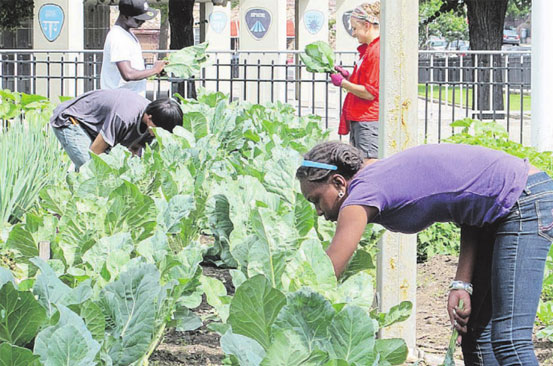
Nairobi, Kenya - Many Kenyan youth remain unemployed or are simply “hustling” for a living ,despite having decent education and some vocational skills. Kenya’s Vision 2030 and manifestos of most political parties outline several strategies of empowering the youth.
Since agriculture is the main economic sector, more youth would be expected to find gainful employment therein. This, however, is not the case. It is imperative to determine the cause of this “missing youth” phenomenon in agriculture and address it.
Recent debates suggest the youth lack appropriate avenues and necessary support to venture into agribusiness.
Lack of interest is also a significant factor. Increasingly, there is convergence of opinion that strategies that bring “swag” to agriculture and hence make it “cool” are sure ways of attracting the youth.
The mistaken notion that agriculture is about owning a few hoes, tilling the land and hustling at the end of the season to find a market lacks the ‘swag effect’ that the youth want to identify and associate with. Kudos to media who have realised this and are putting greater focus on “agribusiness” as the operational term, which encompasses the entrepreneurship opportunities available before, during and after production.
To fully appreciate the diversity of opportunities in agribusiness, it is important that the youth be helped to understand the value-chain concept. Simply defined, the value-chain sums up the various activities, the actors and the benefits incrementally building up along the process from the moment a decision to produce is made until the product reaches the consumer.
Importantly, the value-chain shows how the benefits are allocated to various actors in the chain. Understanding value chain is therefore important in identifying where to plug oneself to make the best return.
Since technology has a strong appeal to young people, it should be used to interest them. Technology not only significantly increases productivity but also helps minimise costs and enhance competitiveness.
To reinforce appeal, messages should point out that agriculture (and agribusiness) is knowledge-driven and at the forefront of modern technological applications, which is now referred to as bioeconomy. Youth-friendly technology intensive agribusiness opportunities abound in biotechnology such as tissue culture of crop seedlings, animal nutrition and reproduction services and innovations (sexed semen, embryo transfer) among others.
In ICT, there is increasing demand for crop and livestock enterprise management software, mobile or e-extension and mobile payments services, and applications of Geographic Information Systems in planning and monitoring farm operations.
An emerging area for entrepreneurial innovations is in extending the value-chain beyond the consumed produce. This could include processing industrial agricultural waste to valuable products for instace brickets, fertilisers or extracting various types of high value compounds.
Due to diminishing farming land, there is increasing interest in technology-dependent crop and livestock production systems in controlled environments, such as greenhouses, or zero grazing units where conditions are monitored and remotely managed using automated systems. Interestingly, young professionals including lawyers, accountants, doctors, engineers, and teachers, have realised the potential in agribusiness and are channeling their investments there.
Stay informed. Subscribe to our newsletter
It is hoped this trend will trigger a pull effect, drawing more youth to the sector. Of course, these opportunities require skill and training to fully exploit. The point is, agribusiness is profitable and cool, and needs no spin or colouring to make it attractive.
The writer is a lecturer at the School of Agriculture and Enterprise Development, Kenyatta University. [email protected]
 The Standard Group Plc is a
multi-media organization with investments in media platforms spanning newspaper
print operations, television, radio broadcasting, digital and online services. The
Standard Group is recognized as a leading multi-media house in Kenya with a key
influence in matters of national and international interest.
The Standard Group Plc is a
multi-media organization with investments in media platforms spanning newspaper
print operations, television, radio broadcasting, digital and online services. The
Standard Group is recognized as a leading multi-media house in Kenya with a key
influence in matters of national and international interest.
 The Standard Group Plc is a
multi-media organization with investments in media platforms spanning newspaper
print operations, television, radio broadcasting, digital and online services. The
Standard Group is recognized as a leading multi-media house in Kenya with a key
influence in matters of national and international interest.
The Standard Group Plc is a
multi-media organization with investments in media platforms spanning newspaper
print operations, television, radio broadcasting, digital and online services. The
Standard Group is recognized as a leading multi-media house in Kenya with a key
influence in matters of national and international interest.








